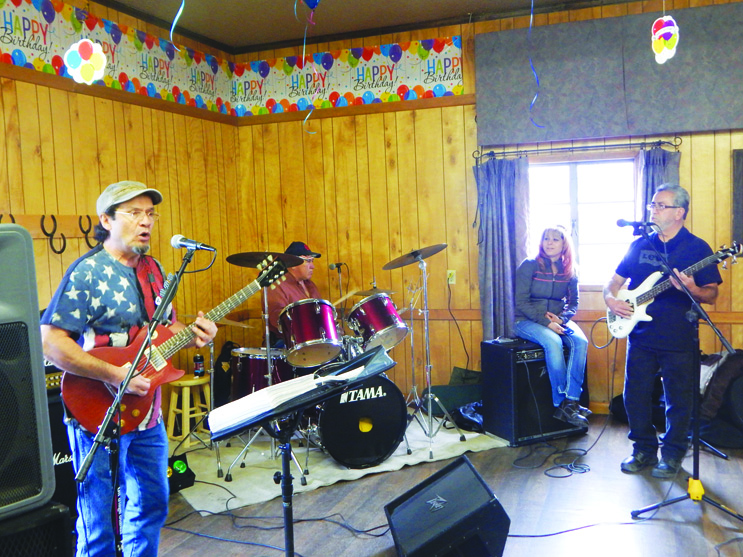South Fork celebrates 25 years

SOUTH FORK— The South Fork Community Center was hopping with good music, excellent food and hundreds of people on Friday night as the town rolled out the red carpet and celebrated 25 years of incorporation. The birthday party was a hit, as everyone filled their stomachs and danced the night away in honor of the mountain town they love. The Malt Shoppe set up house in the kitchen and a local band rocked out the goods in the corner of the newly remodeled building, as guests lined up outside the doors for their chance to partake in the celebrations.
Local town officials and other volunteers helped make the night a success. The parking lot outside was packed to the hilt, and board members could be seen out in the cold weather helping the flow of traffic navigate the tight space left. Town Manager Tom Acre was snuggled in a windbreaker that did nothing in the face of the cold wind coming off of the San Juan Mountains. “There is a lot of people in there, but if you stick around it’ll be well worth it,” said Acre.
In 1992, the town was gearing up for a regular year with only one thing different; the winds of change were beginning to turn and town officials were working on incorporating the community and joining the Valley as a small mountain town.
The town is not a stranger to history. In fact, South Fork as a community, has been on the map for well over 100 years as a well-respected logging and timber community. The town served as a stage stop for several travelers in the early to mid-1800s when the boom days were happening in Creede and Summitville to the north and south of the town.
Since their boom days, the town has overcome several roadblocks— everything from recessions to wildfires and losing the logging industry due to changing federal laws over time. While looking back over the last several years, many things stand out against the contrast of time. Regardless of the emotional response of the memories that come, one thing remains which is a town that has stood against the test of time and has persevered in the face of both joy and tragedy.
After the railroad came to South Fork in 1882, a new type of industry bloomed out of the forests surrounding the one-stop town. Lumber from the area became a staple for the community of settlers that had gathered there. In what seemed to some as an overnight industry, the timber and sawmills took over much of the area.
The mills produced lumber for railways and mining communities nationwide. Due to the timber industry and Creede’s silver boom, the area became a destination place for rich persons seeking a Colorado experience. People came from all around to hunt, fish and stay in the wilderness.
The area between South Fork and Del Norte had agricultural benefits for vegetables such as cauliflower and lettuce. During the early 1900s, vegetable sheds were built right alongside of the timber and sawmills for easy storage. Sheep and cattle were also brought to the area due to rich grass and vegetation in fields surrounding the town.
Each of the things that fortified the town in the past slowly began to fall to the wayside as the area changed; industries like lumber, timber and silver began to disappear and local officials began to look to the tourism trade as a means of survival. In 1992, town residents and officials began to consider incorporating South Fork as a means to market the outdoor recreation opportunities that were abundant in the area.
Through the first part of the year, it seemed that South Fork was at the edge of something new, a direction that brought them to a formidable fork in the road. Now the community survives on tourism and outdoor recreation. The celebrations planned for the coming year will honor those that came and helped create the town today.



